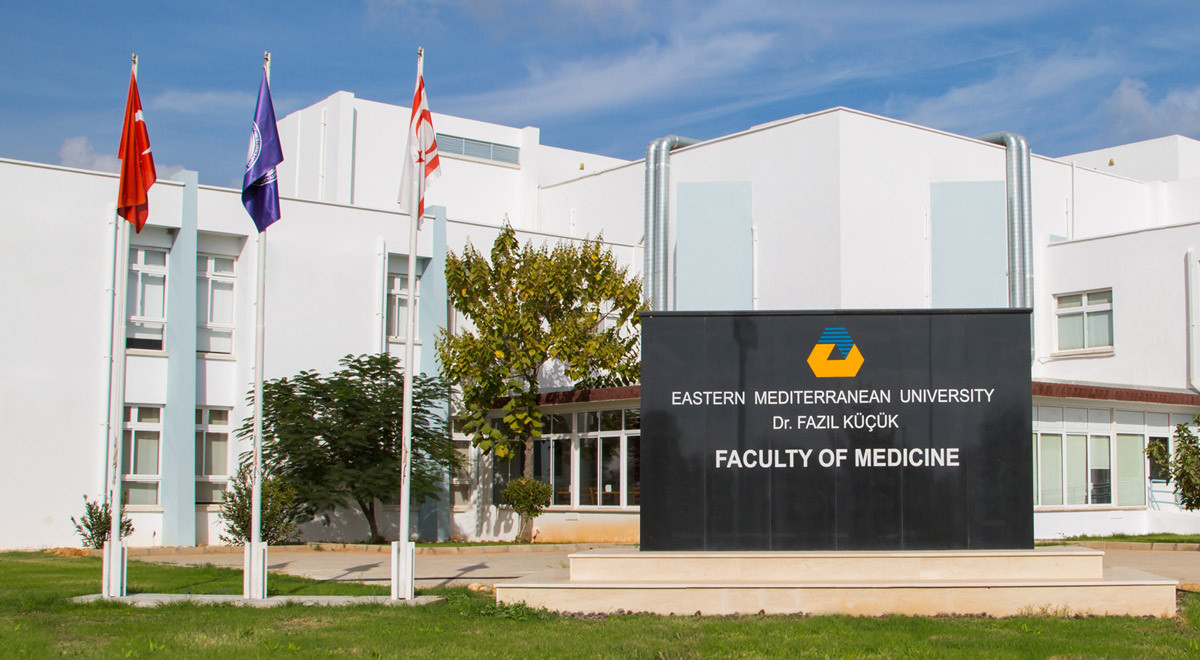Eastern Mediterranean University (EMU) Dr. Fazıl Küçük Faculty of Medicine keeps informing the public with great sensitivity regarding public health. Recently, Marmara University Faculty of Medicine Dean Prof. Dr. Hakan Gündüz answered EMU Dr. Fazıl Küçük Faculty of Medicine Lecturer Op. Dr. Didem Rıfkı’s questions about menopause. Stating that menopause is usually seen at women between the age of 49 and 52, Prof. Dr. Gündüz stated that a woman can understand when menopause is close or if they are undergoing menopause. Prof. Dr. Gündüz stated, “The phase prior to menopause is called perimenopause. This is the 6 year transitional period that starts a change in menstruation and includes the year after menopause. A woman can understand that she is close to menopause from the disorder in their menstrual cycle.”
“Perimenopause Begins at 40”
Prof. Dr. Gündüz mentioned that, with the perimenopause duration, the menopause can consist approximately of 6 to 10 years of time, and said, “Usually the perimenopause phase begins in 40s. In this phase, especially the estrogen levels can change and this can cause aura and vaginal dryness. Perimenopause phase is accepted to end 1 year after the last menstruation and the patient is categorized as post-menopausal. Especially, with the removal of the protective effects of estrogen, two health problems may come into prominence. These are, cardiovascular diseases, especially coronary artery disease and osteoporosis (osteolysis). Precautions must be taken for these diseases. Today, cardiovascular diseases are the primary reasons for death. For protection, our general advice is to quit smoking, take care of abdomen lipidosis and weight, to take 30 minute medium-density walks at least 3 times a week, and to take up exercises such as running or riding bicycle and to keep under control diseases such as diabetes that can increase the risk factors at cardiovascular diseases.”
“Sufficient Calcium and Vitamin D Should Be Taken”
Prof. Dr. Gündüz mentioned that, after menopause the aim should not be to take precautions for osteoporosis but to minimize the possible complications and continued: “Because the bone mass of our body maximizes and then decreases slowly. This decrease can be more rapid after the removal of the protective effect of estrogen. At this stage, it is crucial to take sufficient calcium and Vitamin D. Also, at peri and post-menopause phases, it is important to get bone density measurement once a year for tracking bone health. If Calcium and Vitamin D blood values are low, then the treatment for their replacement can begin. This way, the risk factors are minimized. If the bone density has decreased at a great extent, medication for osteoporosis can be provided. The aim at osteoporosis is never to restructure the same bone tissues of a youngster. Bone loss is not a situation that can be prevented with age or hormonal imbalances. We have to decrease bad complications such as femur fracture by exercise, nutrition and treatment to avert bone loss to minimum.”
“Brisk Walking Is Ideal”
Prof. Dr. Hakan Gündüz finalized his statement as follows: “Regular exercise decreases the risk of osteoporosis. Also, brisk walking is ideal for osteoporosis patients. Osteoporosis is genetically transitional. If there is a story of osteoporosis at the mother’s side, the risk for osteoporosis is present. Patients with these risk factors should be careful. The ones with osteoporosis should consume calcium rich milk and vitamin D rich fish or eggs in their diet. It should not be forgotten that the major source for vitamin D is sun and it is crucial for the body to receive the sun for at least 15 minutes a day. In osteoporosis, the corset is not used for curvature of spine but usually used to decrease the burden at acute spinal fractures and increase the patient comfort. Of course, it can be used as a protective item at progressive curvature of spine but it is not a first choice for us. Unnecessary and long term corset use decreases the muscle power that keeps the spine straight significantly and implicitly increases the pain complaints of the patients.”

